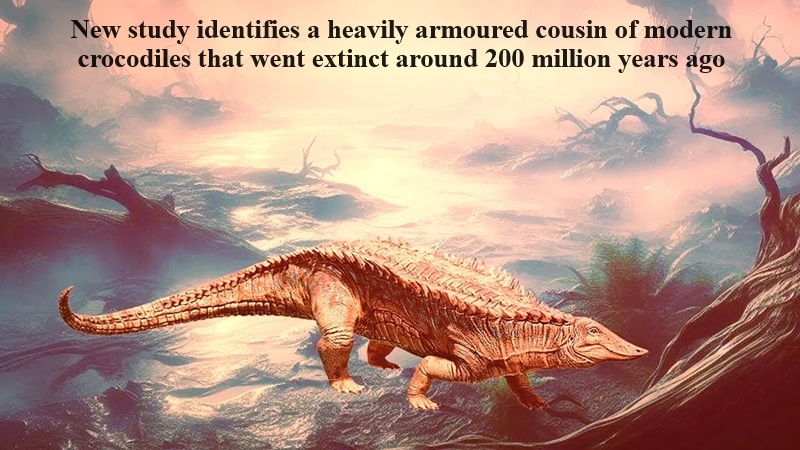
A recent study led by University of Texas, Austin researchers has brought to light aetosaurs, an ancient armoured relative of contemporary crocodiles that roamed the Earth before dinosaurs and eventually went extinct roughly 200 million years ago.
These aetosaurs, as detailed in The Anatomical Record, exhibited diverse forms and sizes, with their fossils discovered across all continents except Antarctica and Australia.
The researchers christened the newly identified aetosaur species as Garzapelta muelleri. The name “Garza” is derived from Garza County in northwest Texas, the location of the fossil’s discovery, while “pelta” is Latin for shield. The species epithet “muelleri” pays homage to paleontologist Bill Mueller, the original discoverer of the fossil.
Published earlier this year, the study primarily focuses on the carapace, or protective shell, of the aetosaur. Typically, scientists rely on the bony plates, known as osteoderms, comprising the aetosaur’s armour to differentiate between species. However, complete fossil skeletons are rare in such cases.
Remarkably, the researchers were able to unearth 70% of the fossil, spanning each major body region from the neck and shoulder area to the tail tip.
William Reyes, a doctoral student at UT’s Jackson School of Geosciences leading the research, highlighted the significance of this discovery, stating, “We have elements from the back of the neck and shoulder region all the way to the tip of the tail.”
Living around 215 million years ago, Garzapelta boasted extensive armour coverage. Reyes likened its appearance to that of a modern-day crocodile transformed into an armadillo, emphasizing the creature’s formidable defensive adaptations.

Post Your Comments